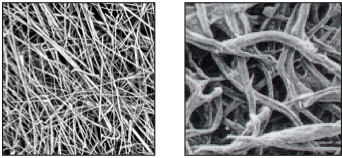Originally Posted By: oil_film_movies
Originally Posted By: Kuato
They should have ratings for 20, 10, and 5 µm right on the box for when the filter is new. But since there are so many sheeple out there that don't know or don't care or don't care to know they will just go with whatever advertising works best for the masses
The sheeple observation is why I think Fram is crazy to offer a $9 oil filter that performs this well and doesn't use paper media or blended glass-paper media. Its bad business. Good for us, yes, yet thats a profit-generating company. They should offer a merely slightly upgraded ToughGaurd and call it an Ultra to compete against the paper-glass Mobil1 filter, and market it in ambiguous terms to appeal to sheeple. Right now, the Ultra competes on the shelf (to ignorant consumers) with M1 Ext Perf oil filters, and people don't know the difference in construction or performance. Bad marketing position with a superior product. Glad they do it though!!!
Bad marketing or striving to gain market share and customer loyalty?
Originally Posted By: Kuato
They should have ratings for 20, 10, and 5 µm right on the box for when the filter is new. But since there are so many sheeple out there that don't know or don't care or don't care to know they will just go with whatever advertising works best for the masses
The sheeple observation is why I think Fram is crazy to offer a $9 oil filter that performs this well and doesn't use paper media or blended glass-paper media. Its bad business. Good for us, yes, yet thats a profit-generating company. They should offer a merely slightly upgraded ToughGaurd and call it an Ultra to compete against the paper-glass Mobil1 filter, and market it in ambiguous terms to appeal to sheeple. Right now, the Ultra competes on the shelf (to ignorant consumers) with M1 Ext Perf oil filters, and people don't know the difference in construction or performance. Bad marketing position with a superior product. Glad they do it though!!!
Bad marketing or striving to gain market share and customer loyalty?
Last edited:






